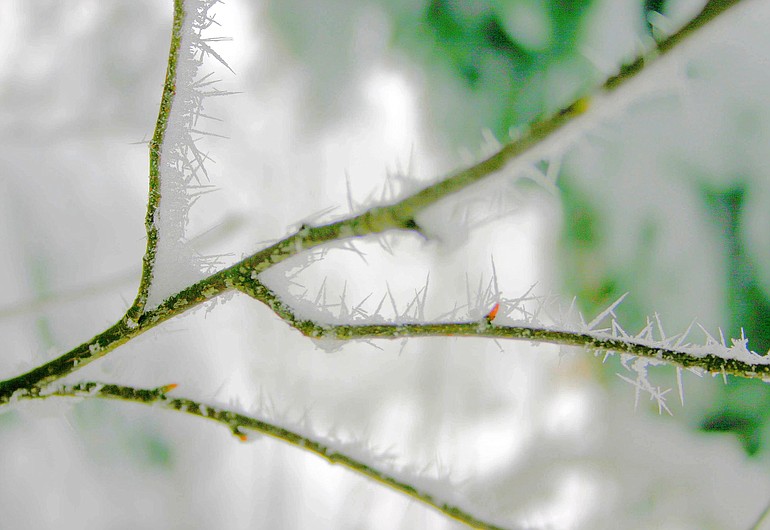Midwinter is the time of year to appreciate the value evergreen plants give your garden. Evergreens are often such standard additions that we forget the impact they can have in every season.
A wide variety of evergreen plants, both broadleaf and needled conifer, grow well in our soil and climate. Washington is, after all, called the Evergreen State for a reason.
The vast selection of evergreens available to us grows more abundant each year. By January, most deciduous trees have shed their leaves, displaying their graceful bare branches. Evergreens, by contrast, are particularly prominent in the landscape through the winter months. A sampling of plants available includes Northwest natives such as snowberry, Douglas fir and Oregon grape (Mahonia spp.). These alone can fill any size garden with a solid base of year-round interest.
Every year new colors are added to the once all-green family of needled evergreen plants. Golden yellow varieties are still a hot option to add life to a winter border. Take any established plant, from the Hinoki cypress to the basic arborvitae, and you’ll find a variety with Aurea added to the name to denote its yellow coloration. I doubt that the end of the color parade is near, as more and more blues, reds and shades of green join the evergreen spectrum.
Several years ago I planted two Weeping Giant Sequoia trees (Sequoiadendron giganteum “Pendulum”) on either side of the view from the south lawn. They took at least 18 months to begin to show any signs of growth, but have finally taken on the shape of sturdy, upright pillars. Their dense, forest green foliage will develop irregular, strongly weeping branches which will eventually frame the sweeping vista beyond.
Having planted dozens of conifers in the garden over the last few years, I can attest to their value in the winter garden. In the eyes of a plant lover, each variety is unique and worth planting for its individual features. I love the architectural form of spruce and pine and the rich, emerald green of the false cypress family, Chamaecyparis spp., which includes the large group of Hinoki False Cypress.
I appreciate the many dwarf varieties now available for the smaller garden and use many of them as accents for beds and borders to give the garden four seasons of interest. I would like to emphasize that dwarf, when applied to plants, does not mean tiny. The term dwarf does imply that the plant is smaller than other plants in the same family. So, if a Western Hemlock (Tsuga heterophylla) can grow quickly from 70 to 130 feet tall and 20 to 30 feet wide, a dwarf simply means it is going to be smaller than the species. Make sure you know how big your specific plant will ultimately grow before you buy it for your own garden.
Bark up the right trees
Take advantage of the barrenness of the season and plant deciduous trees with good bark color and texture. The European Whitebark Birch (Betula jacquemontii utilis) is breathtaking when planted in natural, well spaced stands. Its stunning brother, the River Birch (B. nigra) has cinnamon brown bark that flakes and curls in translucent sheets. A single, clump-forming birch will have multiple trunks to show off its bark but won’t overwhelm a small garden. If you have a large property with rocky, well-drained soil in full sun, plant a large stand of aspen for their ghostly gray winter bark.
In winter we can appreciate many of our plants’ features that get lost in the muddle of the summer garden. Two small trees that grow easily in Clark County and shine in winter are the Paper Bark Maple (Acer griseum) and the Coral Bark Maple (Acer palmatum ‘Sango Kaku’). The pealing sheets of the paper-like bark curl back to reveal bright cinnamon branches and the ‘Sango Kaku’ displays reddish-orange highlights that stand out in the winter garden.
Other seasonal bonuses include the flowering winter camellias (C. sasanqua) and any of the fascinating heavenly bamboos (Nandina domestica). On a dreary day in winter, the Evergreen Huckleberry (Vaccinium ovatum) will show off its lustrous, leathery, dark green leaves with red and bronze highlights. Like its relative, Red Huckleberry (V. parvifolium) it’s native to the region. Not only do its thin green branches with cascading habit provide an intricate winter silhouette, it’s as easy to grow as it is reliable.
Robb Rosser is a WSU-certified Master Gardener. Reach him at Write2Robb@aol.com.



